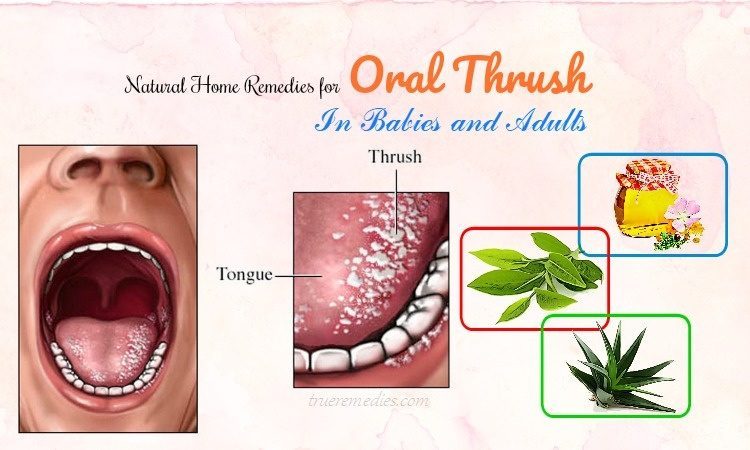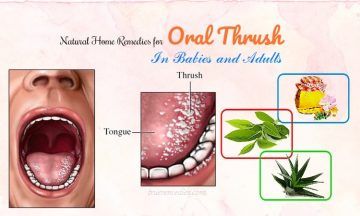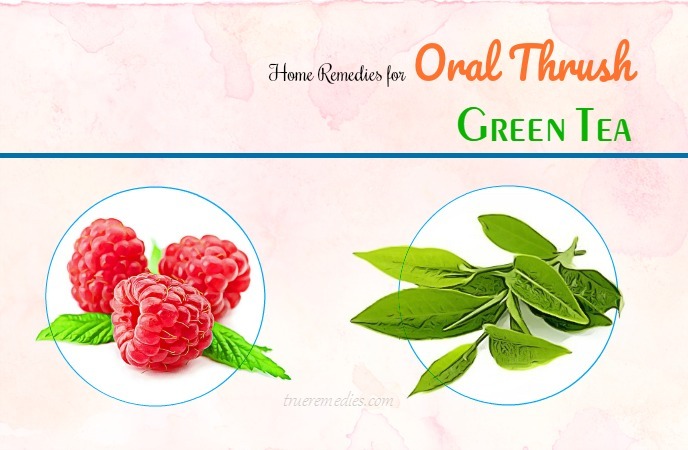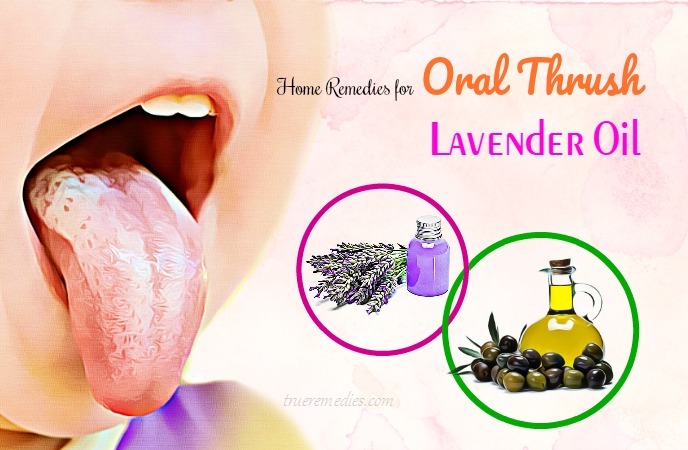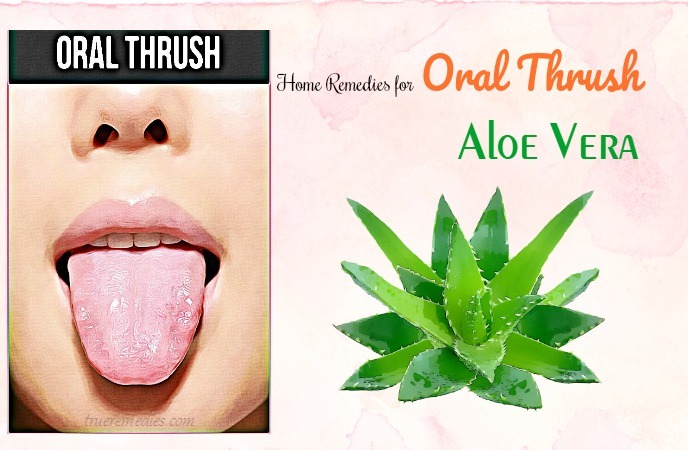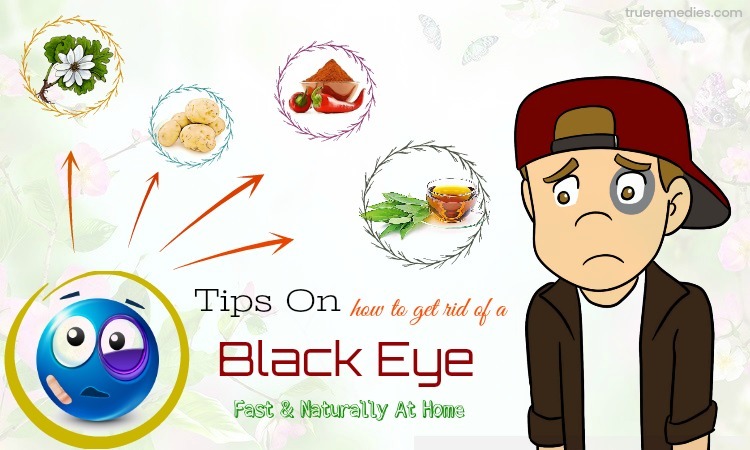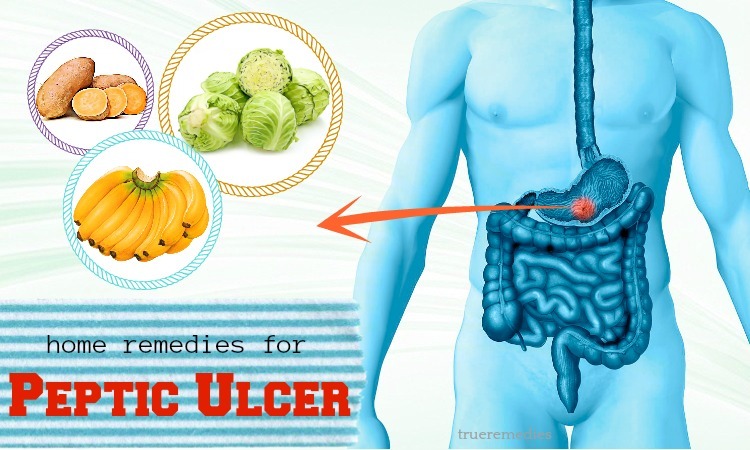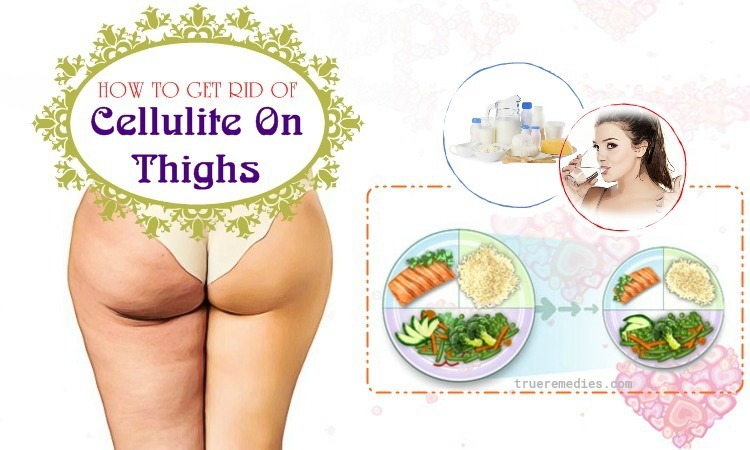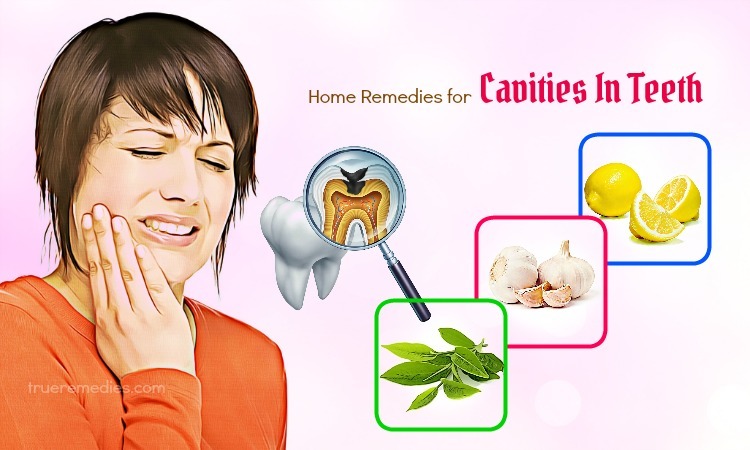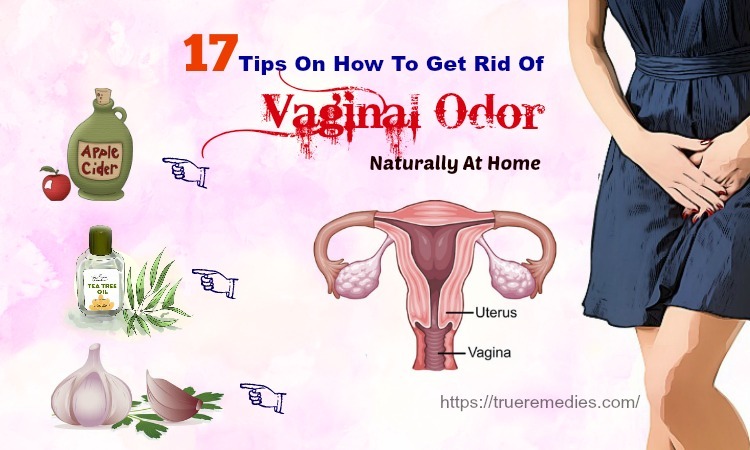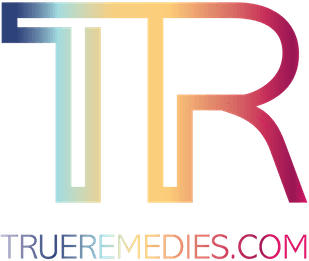updated: 06/16/2019
CONTENTS
What Is Oral Thrush?
Oral thrush, or oral candidiasis, is a health condition that is caused by the accumulation of the fungus Candida albicans on the lining of the mouth. In fact, Candida is an organism in the mouth, but it may sometimes overgrow and cause some signs and symptoms. Oral thrush is characterized by creamy white lesions on the inner cheeks and tongue. Sometimes the condition spreads to the roof of the mouth, the back of the throat, or the gums or tonsils. Anyone can get oral thrush, but babies and older adults are more likely to develop it because they have weak immune systems. Also, it affects people with suppressed immunity or certain health-related issues or people who take some certain medications. If you are healthy, oral thrush may be a minor condition; but if your immune system is weakened, symptoms of oral thrush may get more severe and hard to control.
What Are Common Causes Of Oral Thrush?
Oral thrush may occur when the immune system is weakened by disease or by using drugs such as prednisone, or even when antibiotics may interfere with the natural balance of microorganisms in the body.
Basically, the immune system not only has the function to prevent harmful organisms such as viruses, bacteria, and fungi but it also helps to maintain the balance between the “good” and “bad” bacteria that normally live in the body. Once that the immune system does not work properly, which may cause oral fungal infection. Some reasons for oral thrush are:
- Cancer: If you are diagnosed with one type of cancer, the immune system may be diminished. You have to undergo treatments such as chemotherapy and radiation. Both of the treatments may increase the risk of oral candidiasis.
- Diabetes: In case you have diabetes without using any treatment or controlled method, your saliva may contain large amounts of sugar, which will lead to the growth of a group of yeasts called Candida.
- Antibiotics: When children have to take some antibiotics for a long period of time because of some diseases, antibiotics may destroy beneficial bacteria and multiply harmful bacteria in the child’s mouth, causing the candida to grow.
- Corticosteroid: Corticosteroid is one of the immunosuppressants used in the treatment of myasthenia gravis. Although corticoid is extremely effective in treating many chronic diseases, if you use steroids often or improperly, it will result in many side effects. There are three ways to make use of corticoid, including inhalation, injection, and oral. People who use corticoid inhalation therapy tend to get oral thrush.
- Dental Hygiene: After you feed your baby, if he/she does not receive good oral hygiene, or does not drink water, milk residue will be fermented, forming a favorable acid environment for fungal growth. They will grow quickly and cause the condition. It is common in infants, especially prematurely born babies.
- Adults: They may develop the disease if they don't brush their teeth after eating, eating sweets, or eating at night.
- Vaginal yeast: Vaginal yeast infections are caused by the same fungus that causes oral thrush. Although fungal infection is not dangerous, it may cause fungal infection for the unborn child if you are pregnant. As a result, the baby may develop oral thrush.
- HIV/AIDS: Children with HIV infection have poor resistance have a higher risk of oral thrush. Viruses that cause AIDS often damage or destroy the cells of the immune system, causing the body to be infected and to be hard to resist. Recurring oral fungal infections may be the first sign of an HIV infection.
The elderly who have a long-term illness and weak immune systems or people who have chronic diseases or have to eat by using medical equipment may develop oral thrush. In fact, anyone can develop oral thrush. Here are some potential risks that lead to the disease: smoking, using false teeth, and dry mouth.
What Are Symptoms Of Oral Thrush?
Initially, oral thrush may display no noticeable symptoms. Signs and symptoms of this condition may develop suddenly, but they last a long time.
TrueRemedies Partner Solutions

Need a Help from the Leading Expert Online, Available 24/7?
They’re all here and ready to answer your questions online or by phone. Keep asking questions until you get the answer you need.
- White Spots: Baby’s tongue appears white spots that look like milk residue on the tongue surface. At first, the white spots only take a small position above the tongue, then spread on all the tongue surface and inside cheeks.
These lesions may cause pain to the baby, leading to poor appetite. For some rare cases, other babies seem to be no feeling of discomfort.
- Bleeding if being rubbed
- There is a crack at the corner of the mouth
- In severe cases, the lesions may spread into the esophagus (esophageal candidiasis). If this happens, it may be difficult to swallow, or patients have the feeling as if the food is stuck in the throat. Even it causes pneumonia, fungal lung disease, and diarrhea if it spreads to the stomach, which is extremely dangerous. When the oral thrush is loosened, the mucous membrane is red and very painful, making eating extremely hard.
- To newborn children under 1-year-old, symptoms usually appear in the first few weeks. In addition to the white spots found in the mouth, the baby may be fussy and have difficulty in sucking. Babies can also spread the disease to their mothers while being fed.
- Breastfeeding women with oral Candidiasis may have symptoms such as red or abnormal nipples, dense or red skin, and pain in the nipples, deep pain in the lactation, etc.
When To See A Doctor?
If you experience the following problems, then you should seek medical help instantly:
- You worry that a medicine you are taking might cause oral thrush.
- The painful white lesions develop strongly inside the mouth
You have discovered some information about oral thrush; it is time to find out what the best natural home remedies for oral thrush are.
Top 13 Home Remedies For Oral Thrush In Babies And Adults
1. Sweet Leaf/ Sauropus Androgynus
Sweet leaf, a vegetable quite familiar to us, has a cooling characteristic, which helps to calm the body and brings many therapeutic effects for humans.
The sweet leaf is rich in vitamins, mineral salts, calcium, and other nutrients, all of which are very good for our health[1]. A long time ago, it was used as a substitute for animal protein to prevent disorders of calcium metabolism, resulting in osteoporosis and kidney stones. This type of vegetable is also recommended for weight loss and high blood sugar patients. With all these positive effects, why don’t we use Sweet leaf as a useful method for oral thrush?
Method 1: Sweet Leaf Juice
- Prepare about 15 grams of sweet leaf
- Rinse the sweet leaf thoroughly
- Cleanse it again with cold boiled water
- Grind it with a little warm water to make a fine paste
- Use a cotton ball soaked this paste to apply it to the tongue
- Remember to clean the tongue gently
- Repeat the process 4 to 5 days a week until you are satisfied with the result
Method 2: Sweet Leaf And Borax
- Take advantage of 10gr sweet leaf and 1gr of borax
- Remember to choose the young and green leaves
- Clean the vegetable with water
- Blend this powder with little warm water to make a paste
- Put this paste into a cloth
- Squeeze to collect fresh sweet leaf juice
- Add borax to the juice
- Steam the mixture in a cooker
- After the rice is done, take out the paste
- Soak a cotton bath in the paste
- Apply it to the white dots
- Repeat the process 2 times per day to get the best effect.
Caution:
Although sweet leaf is extremely good for health, and it has many beneficial effects on the natural treatment of diseases, this vegetable is also dangerous if you do not know how to use it properly.
- Miscarriage: Sweet leaf contains high levels of papaverine that causes uterine smooth muscle responsible for contraction. Therefore, pregnant women, especially with women with a history of continuous miscarriage and premature birth, should limit the consumption of this vegetable, especially high doses of raw sweet leaf.
- Insomnia: Many studies indicate that sweet leaf has side effects such as difficulty in sleeping and poor appetite. According to research, the boiling process may also reduce the effects of the vegetables. People who are trouble with sleep should avoid eating vegetables because it contains a substance resulting in insomnia.
- Inhibition of calcium and phosphorus absorption: In addition to supporting metabolic processes in the body, glucocorticoids are the result of the metabolism of the leaves vegetables that may interfere with the absorption of calcium.
2. Honey
Honey has long been used as an excellent sweetener and preservative. However, not everyone knows that honey is very good for health[2]. In addition to possessing the sweet taste as an effective remedy for relieving mood and healing the soul[3], honey also possesses many other useful benefits that we may never have thought of.
It is undeniable that honey contains a lot of sugar. However, the sugar contained in honey is very different from white sugar we eat daily or usually put in the cup of coffee every morning. Regardless of its chemical structure, you only need to understand that honey has a lot of sugar. Other compounds found in honey include dextrin that may be combined with the natural sugar of honey to help regulate blood glucose levels in the body[4]. Additionally, the natural sugar concentration in honey is considered a good antiseptic to help treat cuts and abrasions and eradicate oral thrush in young children[5] [6]. However, parents must know how to choose the right, pure honey to promote the effect on treating oral thrush with honey.
Directions:
- Clean your hands clearly with water and soap
- Wrap a clean gauze on top and around the index finger
- Soak the clean finger in honey
- Clean gently and nicely the tongue
- After cleaning tongue by honey, apply the clean water to rewash the tongue
Caution:
For children, this method may make them feel painful because the old white dots are attached to the mucosa. After finishing cleaning the tongue, children may be afraid of breastfeeding. Hence, using honey to treat oral thrush should only apply to children who are at least 1 year old.
Remember that honey has a multitude of botulinum toxin[7], which affects nerves, paralysis, or even causes death. This toxin is produced during poor honey preservation or due to poor quality honey. Infants under 1 year old (especially under 6 months) are at high risk of poisoning with this toxin because the digestive system of infants is not immature.
3. Green Tea
The next treatment in this list of home remedies for oral thrush is green tea. Green tea is made from the Camellia sinensis leaves. This plant is grown in warm climate and mountain area. Green tea has long been considered a medicinal herb that is easy to make and offers numerous benefits to health[8]. Thanks to many good components in green tea, it may diminish the oral thrush disease[9]. This method is so effective in treating oral thrush at home that you should not ignore.
Directions:
- Wash green leaves with water thoroughly
- Put 10-15 green leaves in a pot of 5-8 cups of plain water.
- Let it simmer, but do not overheat to avoid clearing its nutrients
- Add a little salt to it
- Leave it cool at room temperature
- Soak a towel into the green tea juice and clean your mouth and tongue
Caution: Green tea offers many benefits for your health; but if you use green tea incorrectly or using too much, you will get unwanted side effects from green tea. Catechins in green tea may cause iron deficiency anemia[10]. Besides, green tea inhibits the body’s calcium utilization, making you susceptible to osteoporosis[11] [12]. This causes bone weakness due to calcium deficiency. Consequently, this method is only suitable for children from 6 months old, and pregnant women must avoid using it.
4. Salt Water
It is very common and easy to find salt in the market or stores. We can easily make brittle salt water. In fact, natural unrefined sea salt contains about 82 micronutrients[13] essential for the human body, including sodium, barium, cobalt, selenium, titanium, zinc, and chromium, all of which help to detoxify the body very well[14]. According to a study in the American Journal of Clinical Nutrition in 1971, the fluoride content of sea salt is very beneficial for dental health[15].
Directions:
- Put 1 teaspoon of sea salt in warm water
- Stir it well for 2 minutes to dissolve salt into the water completely
- Use cotton pads to absorb the salt water
- Clean your mouth gently, from the inside out
In case you cannot make salt water by yourself, or you feel uncertain and unsafe about making salt water without the correct concentration, you buy saline physiological 0.1% at convenient stores to make sure your baby's health.
5. Yogurt Without Sugar
Yogurt contains lactic acid, having an effect on preventing penetration and inhibiting the activity of harmful bacteria, which creates a protective barrier to protect the skin[16]. Fermented bacteria in this food may also release natural antibiotics, stimulate the healing process of skin lesions such as scars, pits, regenerate new skin cells, and preserve the skin.
Besides, the Lactobacillus acidophilus in the yogurt may control oral candidiasis[17]. In a study of 33 women with oral infections, the number of recurring cases drops significantly in those who ate yogurt.
This method is beneficial for both adults and children, and it may help you remove the infection in the mouth within 2 days. The beneficial bacteria in yogurt help to kill candida fungus quickly. However, it should be noted that you absolutely avoid sugar yogurt in this treatment.
Directions:
- Eat yogurt slowly and suck in your mouth for at least 30 seconds.
- Rinse your mouth with warm water.
- Repeat the process twice to three times per day until the infection disappears.
Another way to take advantage of yogurt is to consume 2 to 3 cups of yogurt without sugar per day.
Caution:
- Many people assume that yogurt is not only easy to digest and rich in nutrients, but it also supports the digestive system[18]. So, they take advantage of yogurt by overeating it. In fact, eating too much yogurt will affect the gastric mucosa and the ability to excrete the digestive catalyst, which leads to the loss of appetite. According to many studies, the maximum volume is about 300 gr per day.
- Avoid eating yogurt when you are hungry because it is very easy to stimulate the digestive tract and hard to absorb nutrients in yogurt.
- Use yogurt after the main meals. After the meal or after taking medication for about 2 hours is the best time for you to savor yogurt. At this time, the bacteria in yogurt will have the most suitable environment for digesting food, absorbing nutrients efficiently.
6. Garlic
Garlic is one of the most effective home remedies for oral thrush. Aside from being used as a spice, garlic is also known as a versatile herb, with the ability to prevent and treat many diseases. Garlic contains many sulfuric active ingredients such as allicin, diallyl disulfide, and allyl propyl disulfide. These active ingredients are believed to play an important role in creating fragrance and pharmacological effects of garlic, of which the most important is allicin[19] [20].
Directions:
- Peel a fresh garlic clove
- Clean cloves thoroughly
- Leave it dry for 3 minutes
- Chew it directly
If you cannot eat garlic raw, you can grind garlic cloves into a paste and drink the garlic juice or apply the garlic paste to the infected area and then rinse your mouth with warm water. Or, you can add garlic to your daily meals. Garlic supplements may enhance your immune system and improve oral thrush.
7. Lavender Oil
This sounds strange when it comes to home remedies for oral thrush, but it works. Lavender is one of the flowers that many girls love because of its beauty and scent. However, according to scientific research, this plant contains a lot of chemical elements, have a great effect on our health, skin, hair. Especially, the lavender flowers have many useful functions. Therefore, lavender is always used widely in daily life[21] [22]. Lavender has the ability to fight infections[23], helping to reduce thrush in adults.
Method 1: Lavender Oil With Toothpaste
Directions:
- Cut lavender branches into 15-centimeter sections
- Dry flowers for at least 2 weeks to take the dried lavender
- Lightly flush the flowers and place them in a jar
- Pour carrier oil into the flowers, away from the edge of the bottle about 1.25 – 2.5 cm
- Tighten the mouth of the container and set it in the sun for 48 hours.
- Store the oil in bottles or dark jars
- Add a few drops of lavender to your toothpaste
- When brushing the teeth, gently use this mixture to brush the tongue and areas of white dots
Method 2: Lavender Oil With Water
- Drop 2 to 3 of lavender oil in warm water to gargle
- Repeat the process 3 to 4 times per day
Caution: Lavender essential oil may be toxic when being swallowed. Lavender oil should not be used in young children and may have negative effects on the development of male children.
8. Apple Cider Vinegar
This is one of the most common oral thrush remedies in adults. With many people, apple cider vinegar has long been regarded as a familiar spice because of its delicious taste and useful function in treating many health problems.
Apple cider vinegar has many vitamins such as A, B1, B2, B6, C, and E, and many beneficial bacteria that help boost immunity. Its antibacterial and antifungal properties[24] help to heal the soreness on the mouth and avoid it spreading to other areas.
Directions:
- Prepare 4 teaspoons of apple cider vinegar and 1 teaspoon of salt
- Mix 2 ingredients together to make a paste
- Use that paste to wash your mouth
- Repeat this way 4 to 7 times a day to experience the improvement.
Caution:
Consumption of vinegar at excess doses or for a long period of time may cause health problems. However, most side effects of apple cider vinegar are not serious and may be easily prevented. For example, because apple vinegar contains high levels of acid, frequent consumption of apple cider vinegar may weaken tooth enamel, weaken the teeth, and affect its natural shine. To prevent this side effect, do not drink raw apple cider vinegar, dilute it with water or take it with a straw to limit contact with the teeth. Before using vinegar as a treatment for oral thrush, you should consult a doctor’s advice.
9. Coconut Oil
Coconut oil contains an active compound monolaurin, acting as an antimicrobial agent, which boosts the immune system[25] [26]. The potent antibacterial and antifungal properties of coconut oil may help to treat candida bacteria without any side effects. Additionally, caprylic acid, abundant in coconut oil, is effective in treating oral thrush infections[27]. Caprylic acid works well because it only destroys the yeast/fungal infection without killing the good bacteria in the intestines.
Directions:
- Apply coconut oil to the infected areas
- Remain the oil in the mouth for at least 30 minutes
- Wash your mouth with warm water
- Repeat the process 3 times per day to reap the best results
Or, you can add 4 tablespoons of pure coconut oil to your daily diet to get many health benefits.
10. Onion
Onion is not only used for salads and other dishes, but it is also used as a medicine. The antimicrobial and antifungal properties of the onion make it an excellent food against candida[28] [29]. In a scientific study, in areas where people have a habit of eating onions every day, the risk of oral thrush is very low.
Method 1: Eat Raw
- Eat twice a day in meals, each serving a small onion.
- Add onion to salat
Method 2: Onion Wine
- Soak one onion in 20 ml white wine
- Drink a small spoon of wine 3 times a day before meals for half an hour.
11. Seaweed
Seaweed is a natural food that contains many important and essential nutrients for humans. Seaweed is a favorite dish used for many people. However, not everyone knows the great value that seaweed brings to health, especially digestive health[30].
Alga alkane mannitol in seaweed is a low-calorie sugar, which helps nourish beneficial bacteria and kill harmful bacteria thanks to its antimicrobial properties[31]. Thus, seaweed is good for a group of people who are diagnosed with oral thrush. In conclusion, it is essential to add seaweed to the daily diet.
12. Aloe Vera
Aloe vera is a plant growing wild in tropical climates and is cultivated for agricultural and medicinal uses. Many studies indicated that aloe vera reduces pH level and has the ability to create a harsh environment for candida[32] [33]. It also helps to detoxify the liver because the liver filters the byproducts of candida and then destroys them. You can consume aloe vera daily as a juice.
Directions:
- Peel the plant, take the “white meat” inside the aloe vera leaf
- Soak the gel in the salt water for 30 minutes and then rinse thoroughly to reduce the viscosity
- Drain the gel and grind it
- Add water and sugar to the container and boil.
- Put the ground aloe vera gel
- Stir a few turns. Then, turn off the stove.
- Add some ice cubes to a glass and enjoy your solution.
13. Walnuts
Nowadays, after many research are conducted, scientists called walnuts, the king of nuts for the great health benefits they bring[34]. Walnuts are rich in antioxidants[35]. The antioxidant compound is called ellagic, which is very useful in the fight against cancer. It also boosts the immune system. Walnuts have been shown to be more effective against Candida than any other antifungal drug[36].
You can make use of walnuts by eating raw or adding to some of your favorite recipes to boost the flavor.
All the above home remedies for oral thrush are natural and easy-to-find. By applying any of these home remedies, you might keep yourself and your family safe from thrush. However, if you use some of these methods for a long time without effectiveness, it is better to seek advice from your doctor. In case you have any other exciting ideas for the article that we have not mentioned above, please feel free to share with us. Do not hesitate to drop your comments in the box below. We will feedback as soon as possible.

